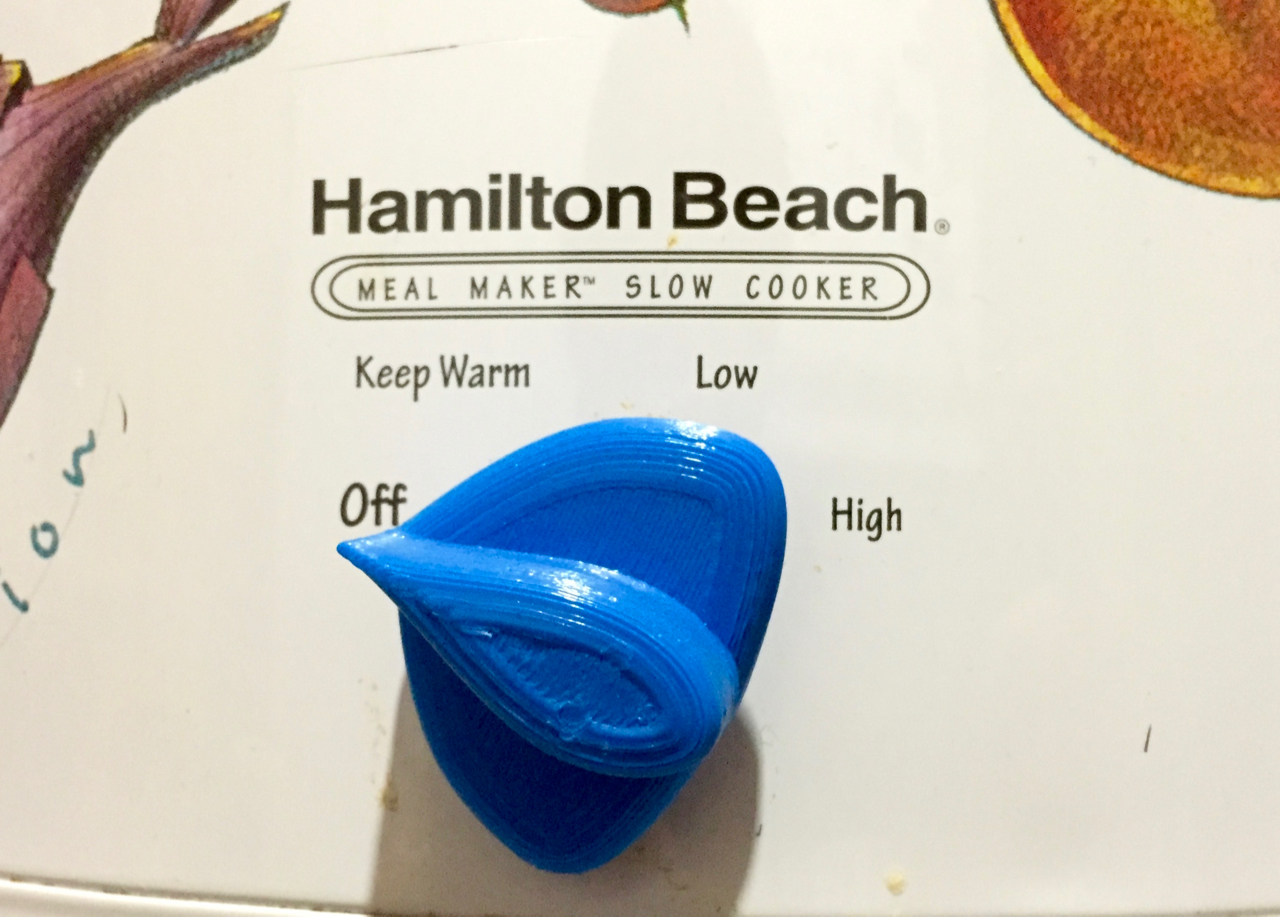
Long ago, we all heard promise of using a personal 3D printer to fix stuff around home. But how real did it turn out?
For many, it simply didn’t. Those fortunate enough to have a desktop 3D printer at home provides an amazing capability, but there’s a severe barrier encountered when trying to print custom items.
I’ve had some success printing simple objects to replace broken plastic components over the years, but each one is a bit of a challenge, often requiring multiple iterations to get it right. Or even close.
I’ve successfully designed, 3D printed and used hose adaptors, camera mounts, phone cases, bracelets and other stuff. Each required measurements and careful thought of how the part would function when used. And often there were multiple iterations, usually because the dimensions of the 3D print were simply not as accurate as one would think. This is particularly challenging when parts must fit together snugly.
One of my minor “successes” is the replacement knob shown at top for a slow cooker. Yes, blue is a terrible color for this appliance, but who cares when you can still get delicious roasts from it?
Here’s my thinking: a broken knob is a very common scenario at home, and can lead to significant frustration as replacement knobs can be difficult to locate, are priced ridiculously high and render your device inoperative.
Why don’t we have an app that generates a 3D model for arbitrary knobs? A knob can be formally defined by a limited set of parameters, each of which could be identified by practically anyone if given sufficient instructions on how to do so.
Imagine a kind of “knob wizard” that asks the diameter of the button, the style of gripper, the shape of the attachment point, stem length, etc. These are relatively simple questions, but once having that information, a 3D knob model could be generated for printing.
With that type of solution, a great many people could make use of their desktop 3D printers to solve a frustration domestic situation. No 3D design skills would be necessary to use the application, only measurements and visual identification.
But, for all I know, someone may have already made such a generator. Has anyone seen one?

